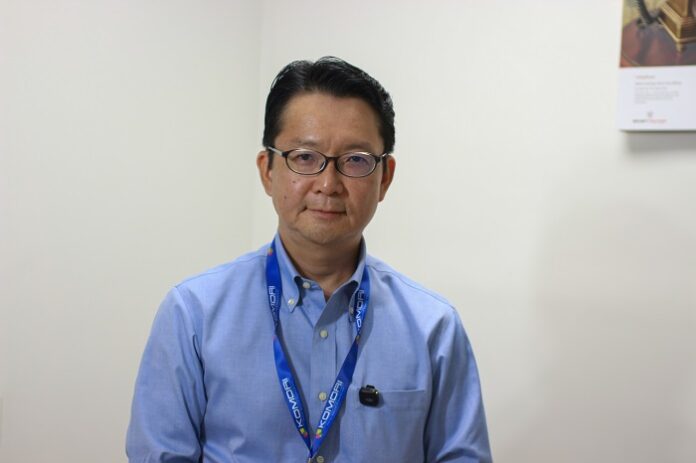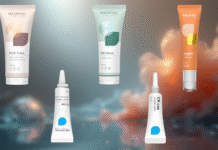In 2020, the Japanese press manufacturer Komori acquired the German folder manufacturer MBO Group, along with its subsidiary Herzog+Heymann, which specialized in pharma inserts and outserts.
In a recent interview with Packaging South Asia, Jun Sudo, president of Komori India, said, “Till now, we were pretty much focused on the pharmaceutical sector. During Printpack 2025 in February, we noticed more and more inquiries from our commercial and publication customers about MBO products for folding book signatures, operating instruction booklets, and advertising materials. That is why we have started to look into the promotion of MBO in the Indian print finishing solutions market. We have some market analysis, and we think there is a good demand for commercial and publication folder equipment. Increasing compliance requirements may lead to increasing versions of insert/outsert productions, so we believe the quick turnaround features of our products will begin to make more sense. Going forward, we will focus on India as a strategic market for the main MBO product.”
Although Komori India has begun its promotional campaign for MBO folders in the country, it is seeing encouraging signs. This optimism is based on several promising leads received at the Printpack exhibition in February, which it expects to convert into sales in the coming months.
Discussing the company’s technical innovations, Sudo spoke about new features, “We showcased the new automation features of MBO folding equipment in exhibitions such as drupa24. These include camera-based systems – an autopilot feeder where the camera reads data codes to automatically detect job changes to adjust settings accordingly, reducing setup time and minimizing operator intervention. Another feature is a camera-based quality inspection system called VT50, used to detect any misfolds or double-sheets, or other types of folding errors for correction during production.”
Turning to the growth in the pharma inserts segment in India, Judo stated, “I understand from a publication that the pharmaceutical sector in India is growing by 7-9% year on year. I hope that is a very promising trend for us in continuing the promotion of our H&H folders. However, Komori currently doesn’t have any plans to manufacture these in Asia or in Japan.”
Sudo also highlighted competition with local manufacturers of folding machines, particularly in the pharmaceutical sector. He noted the company’s intention to now enter the commercial and publication sector with MBO products, where it anticipates a strong opportunity to expand market share rapidly.
Japanese Yen vs Euro situation
On the Japanese Yen vs Euro situation, Sudo said, “I don’t think the current political situation would easily allow the situation to change. I mean, the gap between the policy rates of Japan and other countries’ central banks will not easily narrow. Also, there is a fundamental trend for the outflow of capital from Japan to overseas. For instance, Japan has committed to the United States to make big investments. This kind of trend will not easily allow Japanese and Euro relations to change dramatically, at least in the coming years’ timeframe.”
Komori’s commercial printing and packaging installations
In FY 2024-25, Komori India targeted the installation of 75 multicolor presses and achieved a good chunk of that target. With the first half of FY 2025-26 already over, Sudo said that Komori India is trying to catch up with its order backlog, which has quickly increased over the last several years. “I think we are a little bit behind last year in terms of actual delivery, installation, and commissioning of the machines. We are still keeping up with a similar number, like 70 to 80 machines for FY 2025-26, either installed this year or will follow as an order backlog into the coming years.”
Of the Komori presses delivered, 50-60% go to commercial or publication customers, with the rest going to carton producers. Although according to Sudo, this trend has not really changed over the last couple of years, he added, “I think this will continue, or the ratio [proportion] of packaging machines may increase over the coming years.”
Komori India’s wide footprint in all metros and tier-I cities in India has spread to tier-II and tier-III cities, with more than 30 installations in smaller cities. These include Jammu, Jaipur, Kochi, Lucknow, Haridwar, Rajkot, Karnal, Meerut, Thiruvananthapuram, Tiruppur, Sonepat, Agra, Guwahati, Nashik, Surat, and Vadodara. Sudo’s observation is that the change in demand from second-hand or refurbished machines to brand new equipment in smaller towns and cities is a major factor responsible for the growth of printing and packaging industries in these cities.
The multicolor Enthrone 29 B2 size, the GL 37 SRA1 size presses have played a good role in expanding Komori’s market share. “Though there are still many used machines delivered to the Indian market, we hope that more and more customers will follow this trend as brand new machines will have higher reliability, higher productivity, and efficiency, which will also contribute to making their business competitive. All in all, we are providing a better ROI even on the brand new machines. Hopefully, more customers and printing companies will follow this trend.”
Judo said that while Komori India has a depot in its Faridabad office for spare parts of its current product portfolio, when it comes to used machines from 10, 15, or 20 years ago, it does not keep these locally. “I think many of our customers, or the used parts customers, might be relying on local options for spare parts for refurbished Komori machines. However, if the customer approaches us for spare parts for these machines, we are ready to supply those parts from Japan, which are more reliable and designed and manufactured to meet Komori quality standards,” Sudo explained.
Sudo predicted that the decentralizing trend of the Indian printing industry will continue, and Komori will need to enter more and more local printing markets. “Nevertheless, at the moment, we do not expect the overall new machine import in India to grow that quickly. It will be in the range of 90 to 100 machines a year, maybe 110 machines in the coming years,” he concluded.











